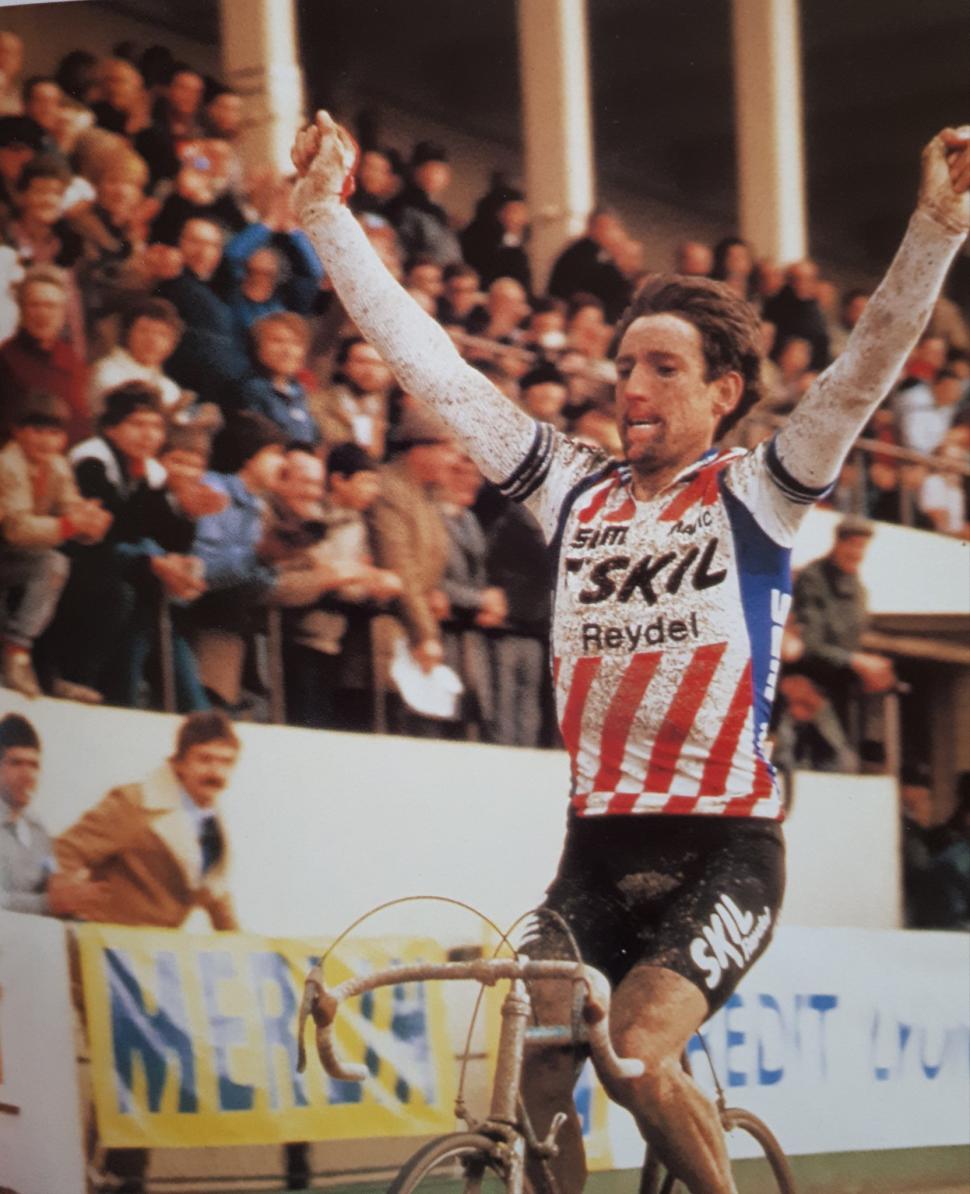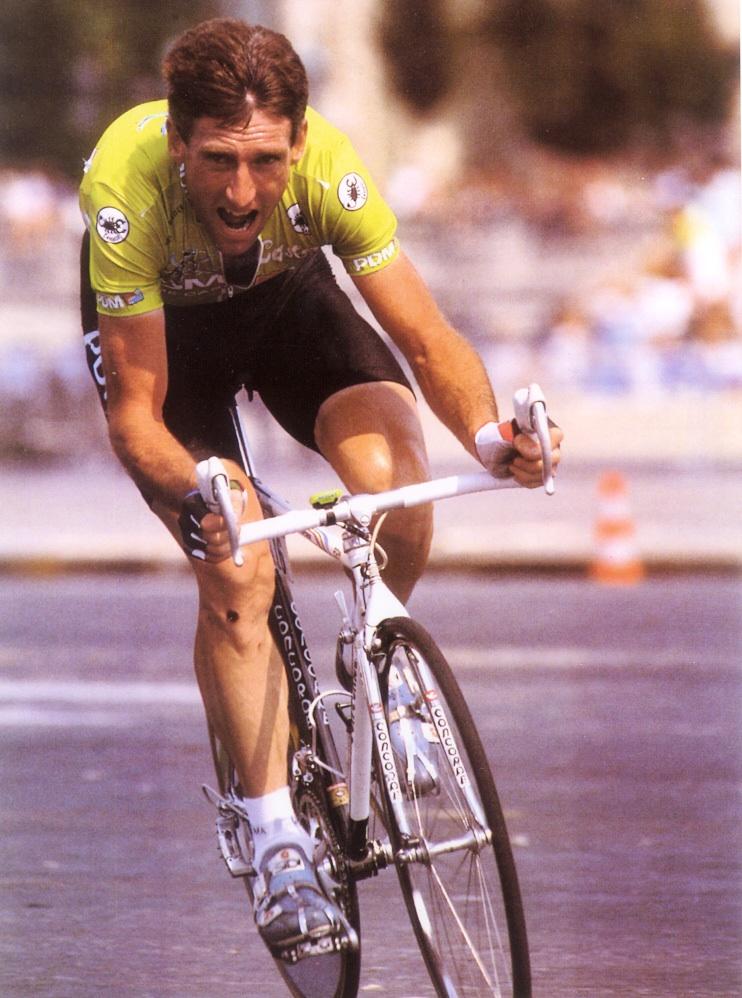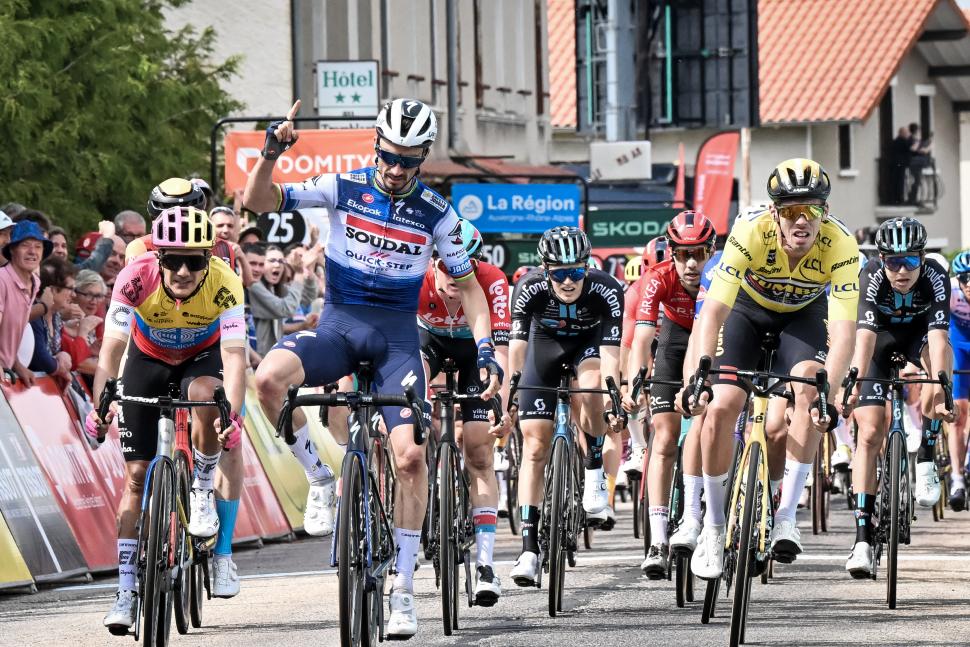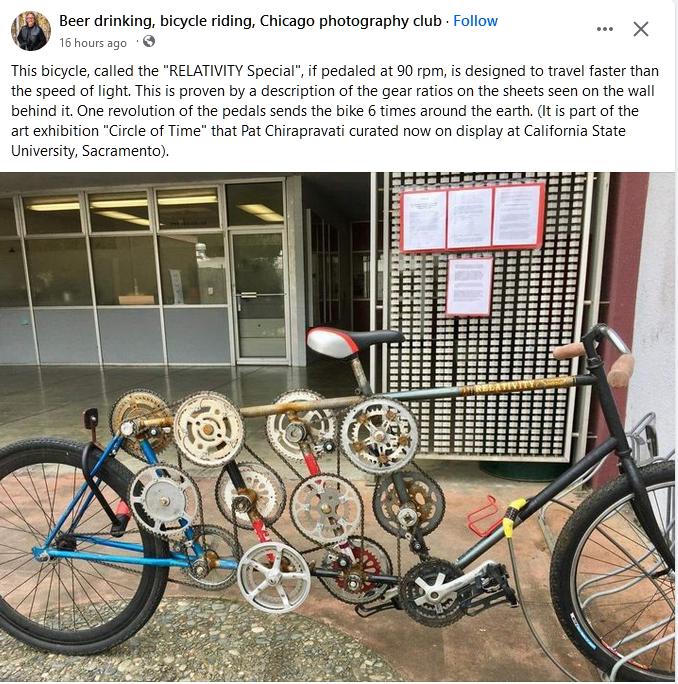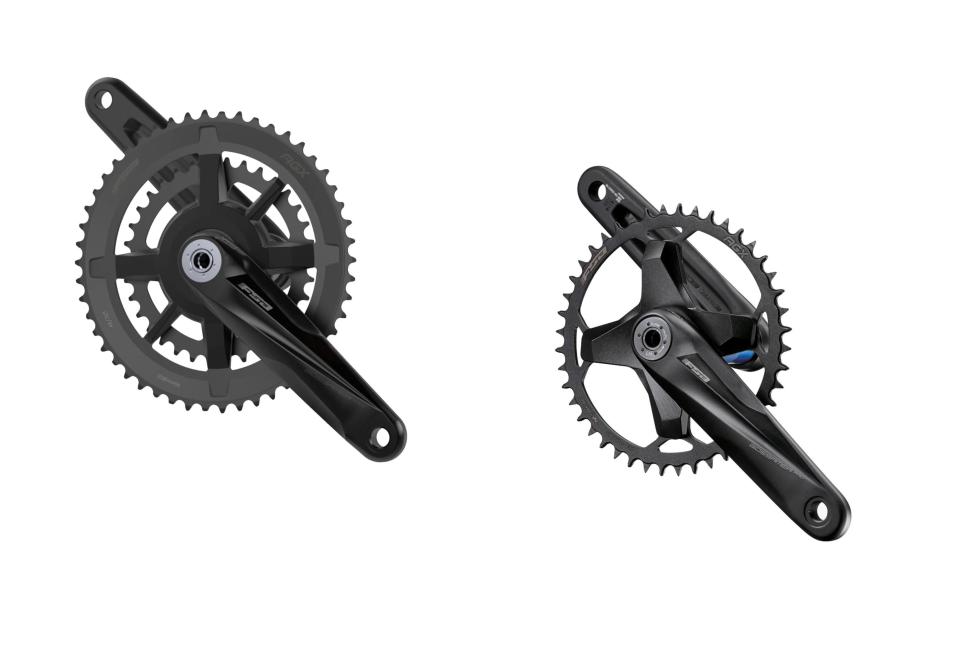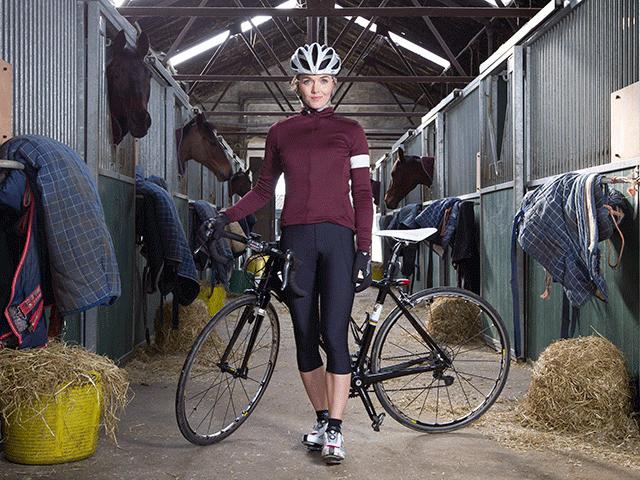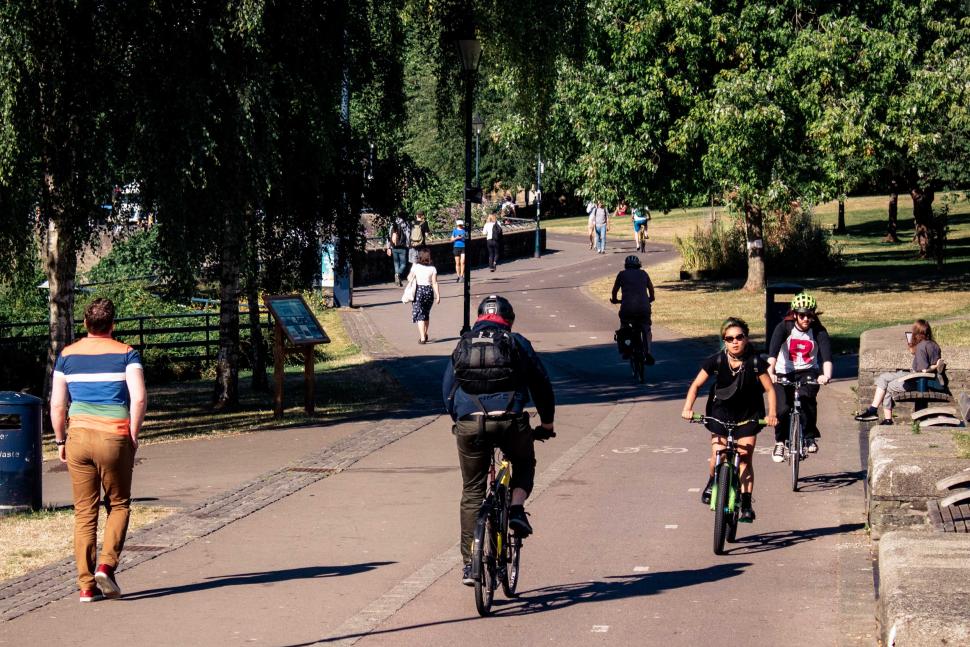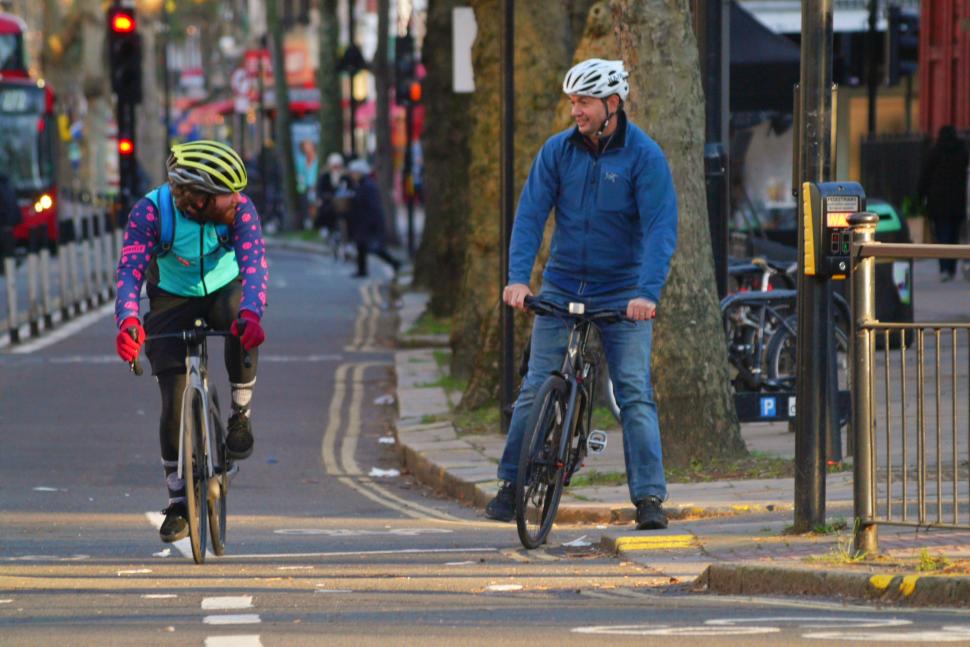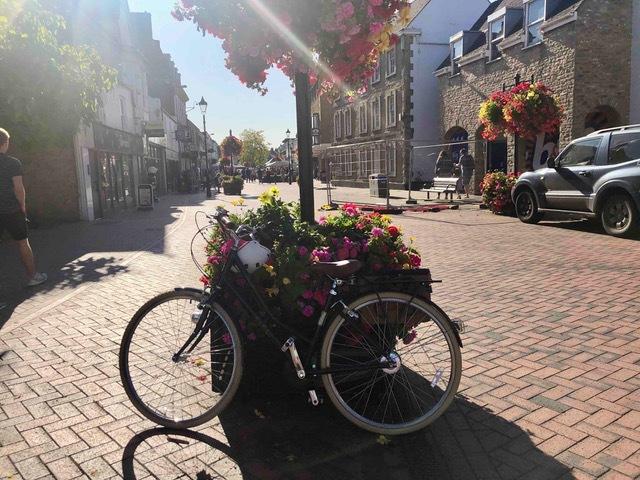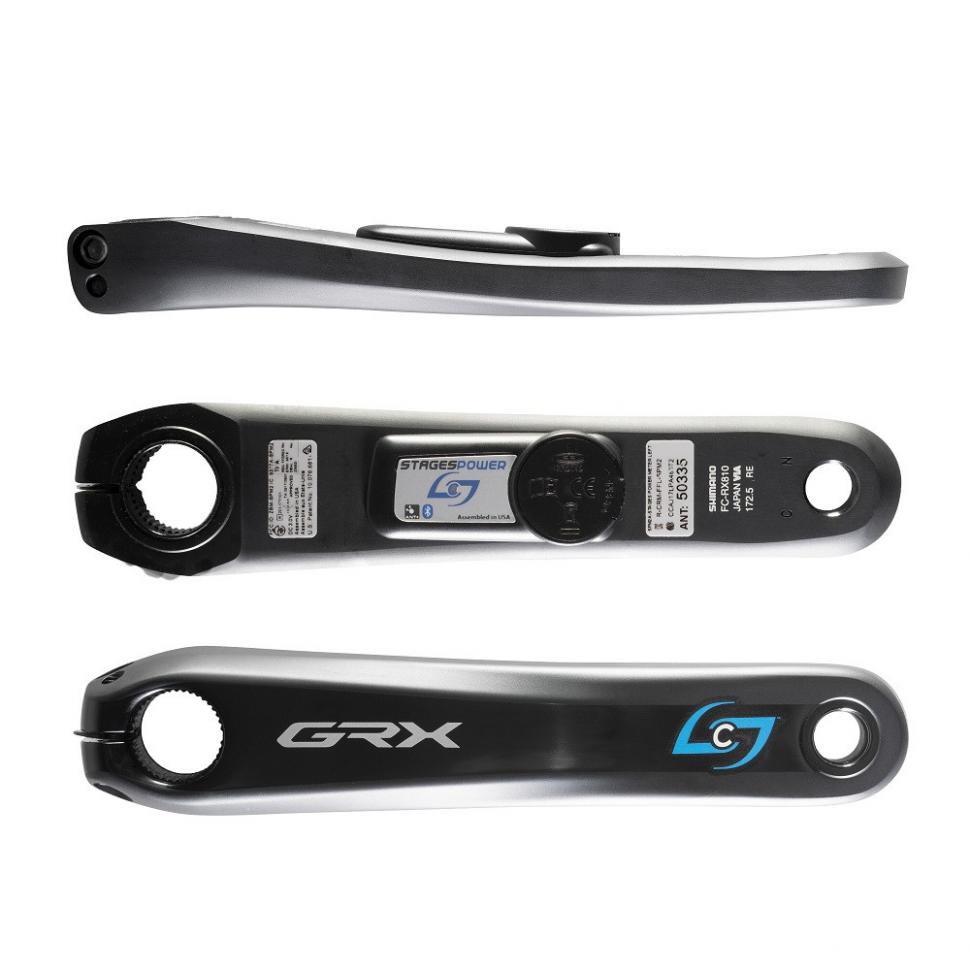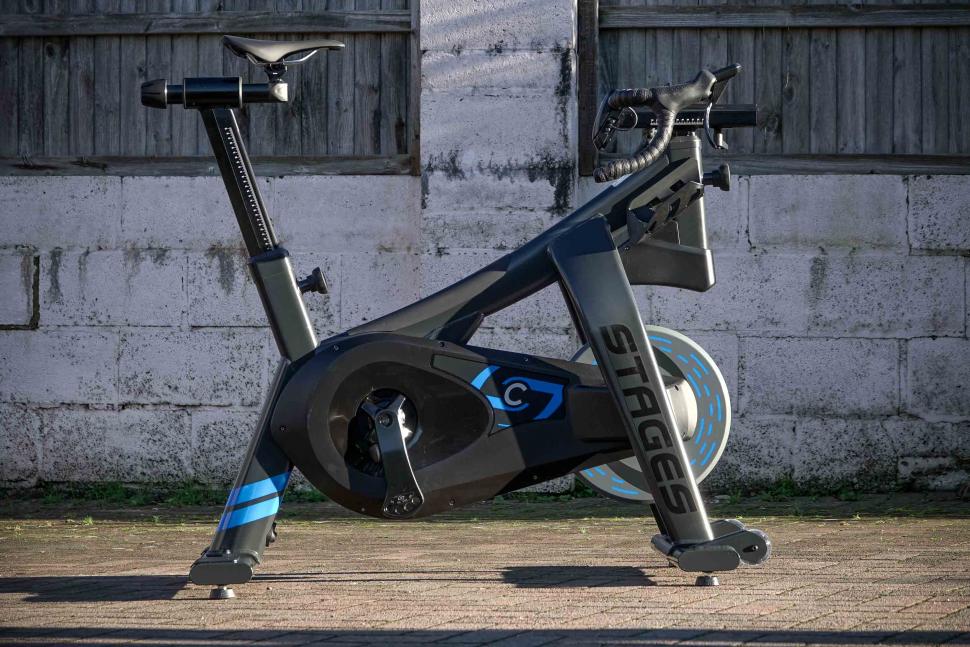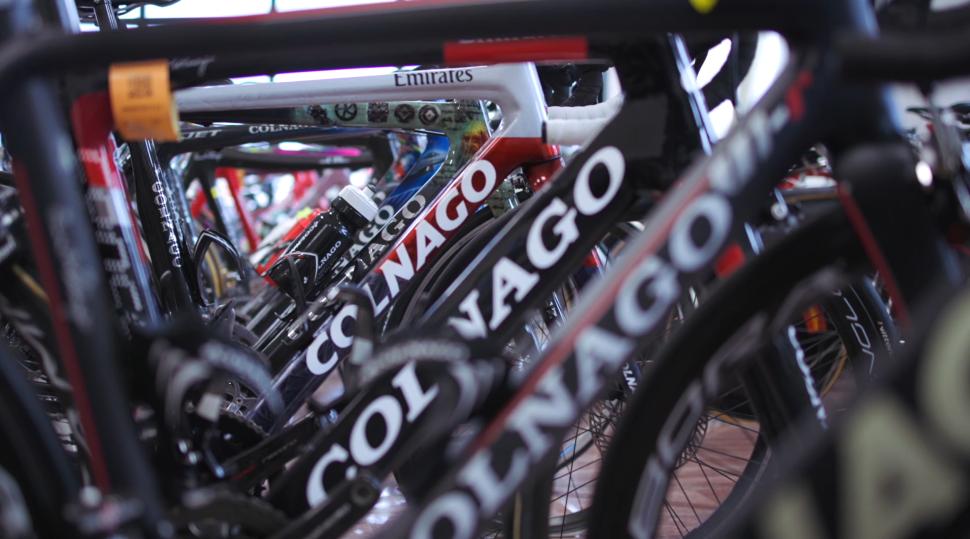- News
- Reviews
- Bikes
- Components
- Bar tape & grips
- Bottom brackets
- Brake & gear cables
- Brake & STI levers
- Brake pads & spares
- Brakes
- Cassettes & freewheels
- Chains
- Chainsets & chainrings
- Derailleurs - front
- Derailleurs - rear
- Forks
- Gear levers & shifters
- Groupsets
- Handlebars & extensions
- Headsets
- Hubs
- Inner tubes
- Pedals
- Quick releases & skewers
- Saddles
- Seatposts
- Stems
- Wheels
- Tyres
- Tubeless valves
- Accessories
- Accessories - misc
- Computer mounts
- Bags
- Bar ends
- Bike bags & cases
- Bottle cages
- Bottles
- Cameras
- Car racks
- Child seats
- Computers
- Glasses
- GPS units
- Helmets
- Lights - front
- Lights - rear
- Lights - sets
- Locks
- Mirrors
- Mudguards
- Racks
- Pumps & CO2 inflators
- Puncture kits
- Reflectives
- Smart watches
- Stands and racks
- Trailers
- Clothing
- Health, fitness and nutrition
- Tools and workshop
- Miscellaneous
- Buyers Guides
- Features
- Forum
- Recommends
- Podcast
news
Aero bikes, disc brakes, and bigger gears making pro cycling more dangerous and causing crashes, says Sean Kelly; Locals slam money spent on “pointless” cycle lanes over fixing potholes; Women more likely to commute by bike + more on the live blog
SUMMARY
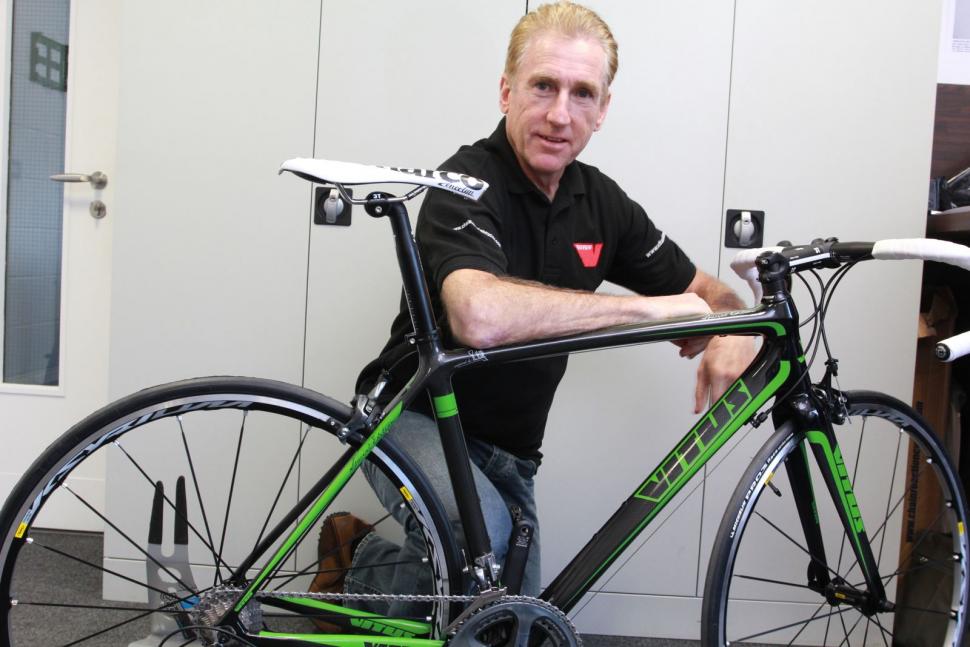 Vitus Sean Kelly special edition - Sean with his bike
Vitus Sean Kelly special edition - Sean with his bike24 April 2024, 08:07
Aero bikes, disc brakes, and bigger gears making pro cycling more dangerous and causing crashes, says Sean Kelly
The advent of disc brakes in the peloton and the increasing use of aero bikes, aero clothing, and bigger gears, along the modern preference for individual training efforts which neglect group riding, are behind the recent spate of high-profile crashes in professional cycling, Sean Kelly has said.
The classics legend-turned-iconic Eurosport commentator’s claims come in the aftermath of the shocking high-speed crash at the Tour of the Basque Country earlier this month, which injured several leading riders including Jonas Vingegaard (potentially ending the Dane’s hopes of a third consecutive Tour de France title), Remco Evenepoel, Primož Roglič, Jay Vine, and Steff Cras.
And while the famously combative Kelly was himself no stranger to the rough and tumble of pro cycling, especially in the sprints and the cobbled classics, the Irishman has told Sticky Bottle that a number of modern trends and innovations within the sport have increased both the speed and therefore the danger for today’s crop of riders, and have contributed to the unusually high number of mass crashes we’ve seen over the past few years.
“There are these high speeds now,” Kelly told the Irish cycling site. “The bikes are so aero, and maybe more difficult to handle. They add a bit more speed to the riders, as does the aero clothing.
“Everything is all about speed now, and you can only go so fast in some of those corners. That’s the problem, they are arriving at too much speed.”
The former world number one also believes the use of much larger gears has had a massive effect on how descents are tackled – a key talking point following the crash in the Basque Country.
“Of course, they are using much bigger gears. We hear about this crazy gearing in different events like in time trials, especially. But also in the normal road races they are using these huge gears,” the Eurosport commentator said.
“So that means that on descents you can get higher speeds than before as you don’t run out of gearing. Previously you were spinning out and you couldn’t pedal anymore. So that adds to it.”
Kelly also reckons that the increased focus on riding to watts, and bespoke individual training plans, have led to a widening disparity between the best and worst bike handlers in the bunch.
“Some riders can calculate how fast they can go on a corner. Others maybe don’t have enough experience and they just crash out and slide off the road,” the double Paris-Roubaix winner said.
“There is a question if bike handling is perhaps not as good as before, there is talk about that as well, that when riders nowadays are junior they have a coach and they are told to go out and do X number of hours at X number of watts.
“This individual training. And they don’t get enough bike riding in groups. Whereas if you go back some years, a lot of riders trained together in groups of six or eight or 10 people. So perhaps with some riders, their bike handling is not as good as it should be.”
And of course, it wouldn’t have been a discussion about increased risk in the peloton without disc brakes rearing their sharp-stopping head.
“The disk brakes are so sensitive. When you go on them hard, somebody behind you does not have the reflexes to react quickly. Then they just crash into the back of you. That’s how a lot of the crashes are happening,” Kelly pointed out.
“It slows up suddenly front, there is a bit of a panic, and they seem to crash in from behind. Eddie Dunbar had that problem there when he crashed in the UAE Tour. He was hit by behind. If a big guy hits you like that, and particularly if you are a light like Dunbar, it is like being hit in a car with a truck coming from behind.
“I think the issues are a lot to do with the speed they are going now, the bikes, the riders, the level of fitness that is there. There are more riders at a higher level a long, long way into a race. They’re all able to be up there to a certain point until the vital where the race is blown apart.
“You have 70, 80, 100 riders fighting for 30, 40 positions. And that’s going to equal crashes because there’s not enough room on the road. It’s just a combination of all those things that are causing those crashes.”
24 April 2024, 09:40
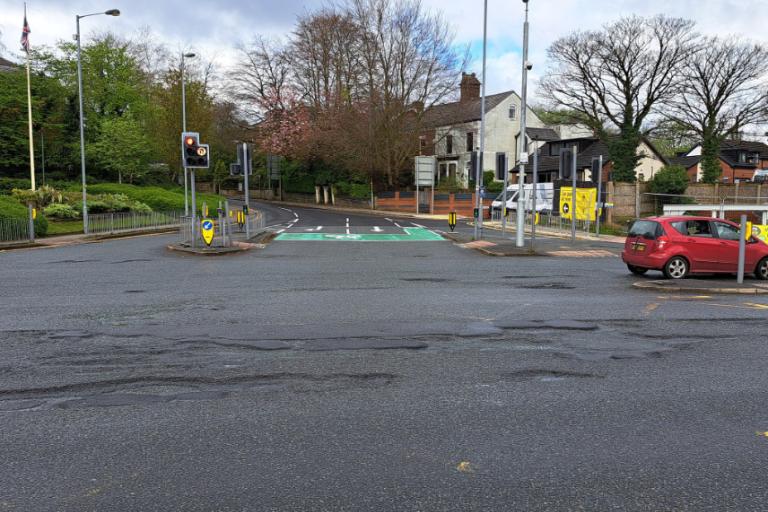
“We’re spending cash on posh streets and cycle lanes... not on dangerous potholes,” says Manchester Evening News’ chief reporter, as locals slam “juxtaposition” of “pointless” new bike infrastructure and “old worn-out road surface”
Ah, is it that time of the day already, when the local press decides to focus in on the terribly neglected nature of our roads and streets – by comparing it to newly installed, apparently “pointless”, cycling infrastructure.
Yes, because that’s the problem, bike boxes.
But that’s the argument that was put forth by the Manchester Evening News’ chief reporter Neal Keeling this week – under the catchy headline “We’re spending cash on posh streets and cycle lanes... not on dangerous potholes” – who described a “notorious crossroads” in Bury which, according to Keeling, is a “cluster of twenty craters, cracks, and holes”.
“The state of the road has been an issue for many locals but their, and my patience, has become volcanic overnight,” Keeling wrote.
That volcanic eruption (which surely wouldn’t be good for the state of the road) occurred because Bury Council “finally sent out a highway repairs gang in the last week or so to the junction”.
“But their handiwork did not stretch to tackling the craters,” Keeling notes. “Instead at the bottom of Church Lane we now have a beautifully sea green buffer zone for cyclists waiting for the traffic lights to change. We also have extra road signage for cyclists.
“The closeness of cracked, wrecked road next to spanking new – and pointless – road markings has not gone down well with Whitefield residents.”
New bicycle lane markings at the bottom of Church Lane Whitefield .. juxtapositioned with the old worn out road surface on the junction ..
This has to be one of the most damaged section of road in the Borough pic.twitter.com/JHn7xhBzch
— Love Whitefield (@LoveWhitefield) April 20, 2024
One of those residents posted a photo of the junction, and the new bike box, with the caption: “New bicycle lane markings at the bottom of Church Lane Whitefield... juxtapositioned with the old worn-out road surface on the junction. This has to be one of the most damaged sections of road in the Borough.”
Another wrote: “The irony is that they’ve made it safe for cyclists at the lights who then have to weave through the potholes at a very busy junction.”
Keeling then added that the new splash of paint and some cycle markings proves hat “priority appears to have gone out of the town hall window”.
“If it was in Bavaria where Audis purr over perfect roads you could imagine in one night Germanic engineering and floodlights would arrive and leave the road pristine the next morning. But the bumpy ride in Whitefield town centre looks set to continue,” the chief news reporter wrote.
But how about fixing both the potholes and installing safe cycling infrastructure, rather than pitting them against each other, eh Neal?
24 April 2024, 15:27
Those Van Rysel bikes are doing the trick: Dorion Godon leads home Decathlon-AG2R one-two after attacking day at Tour de Romandie
Ditching the brown shorts, bringing a major French sporting goods retailer on board as title sponsor, and riding that retailer’s bikes have certainly paid dividends for Decathlon-AG2R, who secured their 11th win of a staggeringly successful season with one of the most comfortable sprint one-twos you’re ever likely to see, as Dorion Godon won stage two of the Tour de Romandie in Fribourg this afternoon – ahead of his designated sprinter Andrea Vendrame.
Like a vintage Renshaw-Cavendish or Steegmans-Boonen performance, Godon launched as Lidl-Trek’s lead-out for the boxed-in Thibau Nys faltered, with Vendrame tucked in his wheel.
But with the line swiftly approaching, and nobody else able to match the Decathlon pair, the Italian Vendrame remained tucked behind what was supposed to be his lead-out man, raising his arm in celebration as Godon crossed the line to cap off a stunningly dominant team performance, closest challengers Gianni Vermeersch and Milan Menten not even in a picture that could well soon be framed and hung on the wall at Decathlon HQ.
It's a 1️⃣-2️⃣ for @decathlonAG2RM at Stage 1 of the Tour de Romandie
Dorian Godon comes home ahead of Andrea Vendrame in a sprint finish@TourdeRomandie | @DorianGodon | @AndreaVendra pic.twitter.com/yVKB4x6GPe
— Eurosport (@eurosport) April 24, 2024
See, it was the brown shorts holding them back.
Before Decathlon-AG2R’s sprint par excellence, the GC battle continued to bubble over nicely on the first road stage of the Tour de Romandie, as UAE Team Emirates’ young Swiss prospect Jan Christen launched a strong attack on the cobbled climb of Lorette with 35km to go, drawing out Richard Carapaz and David Gaudu in the process.
And in the final 15km, Julian Alaphilippe – perhaps motivated by Cédric Vasseur’s “retirement home” comments – proved there’s plenty of life in the old, swashbuckling dog just yet, building on yesterday’s podium with a series of speculative digs. Is the old LouLou back? If he is, this week in Romandie could soon become very interesting.
24 April 2024, 14:54
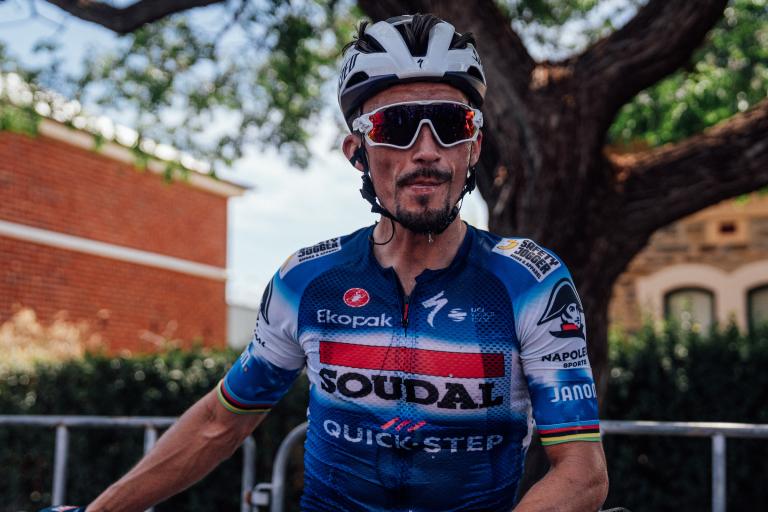
“We don’t want Julian Alaphilippe to come to Cofidis as a retirement home,” says team boss Cédric Vasseur
It’s fair to say that Cofidis haven’t enjoyed the most promising start to 2024. In fact, the French team are yet to win this season so far, and with the threat of relegation from the WorldTour looming at the end of 2025, Cofidis chief Cédric Vasseur knows that this winter’s transfer window could prove pivotal for his squad’s future.
With Vasseur keen to convert this year’s series of top fives into wins – despite last year’s apparent breakthrough performance at the Tour de France, where the team secured two wins, their first at their home grand tour since 2008 – Soudal Quick-Step’s big name duo Julian Alaphilippe and Kasper Asgreen are reportedly touted to be considering swapping blue for red.
However, former Tour yellow jersey holder Vasseur is acutely aware of the risk of signing a star like Alaphilippe, who finished third at yesterday’s Tour de Romandie prologue, especially considering the mercurial Frenchman’s advancing years and recent patchy form.
“In an interview, I said Julian was a champion, not just a rider, and I really respect him,” the 53-year-old told GCN. “As a team manager, I would be delighted to work with him, but we didn’t really talk seriously until now.
“If there’s an interest and he’s still showing something in the Tour de Romandie we would go on the market but for this moment we’re still… We don’t want to sign Alaphilippe for the name.
“We want to sign Alaphilippe for what he can give to the team. At this moment he’s facing a hard time so we wait for a bit and of course, we don’t want him to come to Cofidis as a retirement home.”
(A.S.O/Billy Ceusters)
Vasseur also pointed to the chastening example of Peter Sagan’s ill-fated stint at TotalEnergies, where the three-time world champion looked a shadow of his former swashbuckling self.
“We all know the situation with Peter Sagan and TotalEnergies and we don’t want to do that with someone else. It’s why I don't want to go too fast with Julian. I really respect him. If I start a discussion with him, it means that we want to go until the end. I don’t want to him to lose time with us,” Vasseur said.
“We want to be sure because we’re in a situation where we can’t make any mistakes in 2025. We can’t be in the position of FDJ and say if Julian cannot bring in success then it’s not a problem because others can.
“If we take Julian then he will have to perform in order to bring us between 2,000 and 2,500 points. I’m not sure at this moment that he can do that. I don’t want to sign him because I appreciate and respect him. I want to sign riders who can bring good results to the team and show that Cofidis still has a place in the UCI WorldTour.”
24 April 2024, 14:27
“It is pretty common on my route to be fair”: Near Miss of the Day lurches into the 900s with a classic taxi driver close pass on the brow of a hill (and a police warning letter)
24 April 2024, 13:56
Sean Kelly’s right, these massive gears are getting out of hand
Six times around the earth for one revolution, is that all?
I’m pretty sure Bert Grabsch was churning a bigger gear than that on his way to winning the 2008 world time trial championships…
24 April 2024, 13:21
Tobias Lund Andresen sprints to first professional victory and takes race lead at Tour of Turkey
The Club 18-30 Seaside Tourist Resort Sprintathon Tour of Turkey (to give the race its full, completely unofficial title) continued this afternoon in Bodrum, where Tobias Lund Andresen continued the race’s recent trend of surprise victory, sprinting to the first win of his pro career and taking the race leader’s jersey in the process.
At the end of a hilly 138km, which saw the breakaway hold on until the last few kilometres before a speculative late surge by young Belgian Robbe Claeys, the 21-year-old DSM-Firmenich rider Lund Andresen showed remarkably patience, capitalising on Astana’s lead out for stage two winner Max Kanter, before timing his sprint to perfection on the fast downhill run to the line.
"What a chaotic final" 🫨
Tobias Lund Andresen is victorious in the Tour of Turkey Stage 4 after an incredible finish 💥🚴#tur2024 pic.twitter.com/VMKT2uBo3H
— Eurosport (@eurosport) April 24, 2024
Danny van Poppel, in a bid for redemption after yesterday’s win was stripped from by the commissaires for a sprint deviation, was the only capable of following Lund Andresen acceleration, but the chaotic, rapid nature of the finish left Van Poppel little opportunity to overhaul the young Dane, who took his maiden victory at the elite level with impressive style.
Now, just get three for two vodka shots in the nearest bar, and he’ll be set.
24 April 2024, 12:40
Total (Crankset) Recall for FSA due to potential detachment risk
24 April 2024, 12:20
Look at the state of those silly, super-wide gravel bars – Oh wait, hang on a minute…
Not a bike I’d be throwing my hand up in the air to review, if I’m honest…
24 April 2024, 12:05
More info on the situation at Stages…
24 April 2024, 11:52
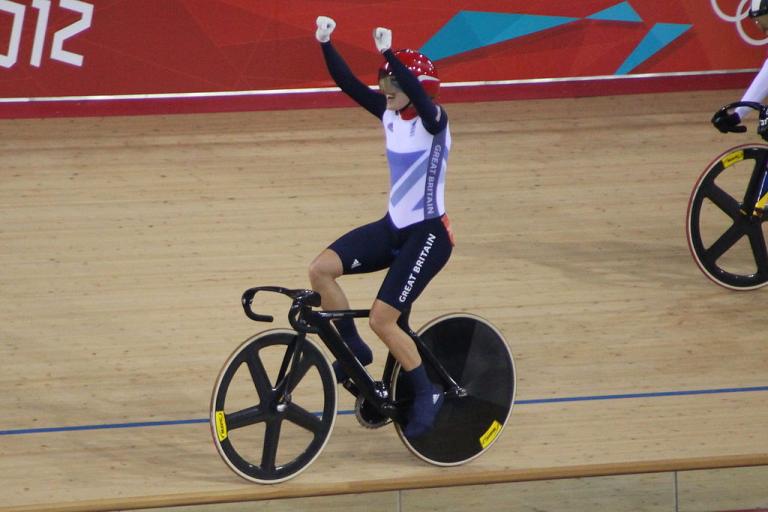
Victoria Pendleton says she was “discouraged from having anything else other than a cycling focus” during career
Victoria Pendleton has revealed that she was “emotionally, psychologically” drained by the time she finished her illustrious cycling career at the 2012 London Olympics, and said that she was told by the people around her to focus purely on cycling if she wanted to be the best.
The double Olympic gold medal-winning track sprinter, who has spoken about her mental health struggles and her fractious relationship with the culture at British Cycling in the past, spoke about the stress she felt during her career as part of Sky Sports’ Real Talk podcast.
“I’d been very much led to believe by the people around me that you had to focus all your energy on this one thing if you wanted to be the best. And actually thinking about life after cycling, other career opportunities, was a distraction,” the nine-time world champion said.
“I was discouraged from having anything else other than a cycling focus. I thought I’d cross that bridge when I come to it. Even as I was nearing the end of my career, I didn’t allow myself to think beyond London 2012. When I took off my shoes and that was it, it felt like a sudden deadline to my career – it was finished.”
> Victoria Pendleton says she could be at Rio if not for Shane Sutton
She continued: “By the end of my career, I felt like I had no choice but to leave. Emotionally, psychologically, I’d had enough. I thought, ‘I can’t exist in this system anymore’.
“And the only way I could justify that to myself and manage that feeling, was telling myself it was only a stepping stone – I was putting my whole cycling career into a tiny little stepping stone.
“It was a really fantastic stepping stone and it supported me for a long time, but it was only a stepping stone for what I’m going to do next.”
24 April 2024, 11:16
That’s Tom Pidcock, MBE, AGW (Amstel Gold Winner) to you…
‘Good job your blisters have healed from Roubaix. And that descent on the Galibier was something else. Hopefully Ineos allow you to continue to focus on the classics, instead of trying to turn you into a Wiggins clone for the grand tours,’ Princess Anne is (probably) saying here…
24 April 2024, 10:58
Come fly with me… to a bike launch (or maybe not)
road.cc chief Tony’s thoughtful piece on the necessity (or otherwise) of flying a load of journos across Europe to cover the launch of a shiny new bike has opened up quite an interesting discussion for the cycling industry as a whole, and seems to have generated quite a lot of positive feedback.
What do you reckon? (Yes, I’m fully aware that we’re gazing upon our belly buttons rather intently with this one, but it does have wider implications).
> The problem with bike industry launches… and how to fix it
Alright, back to potholes and bike lanes…
24 April 2024, 10:44
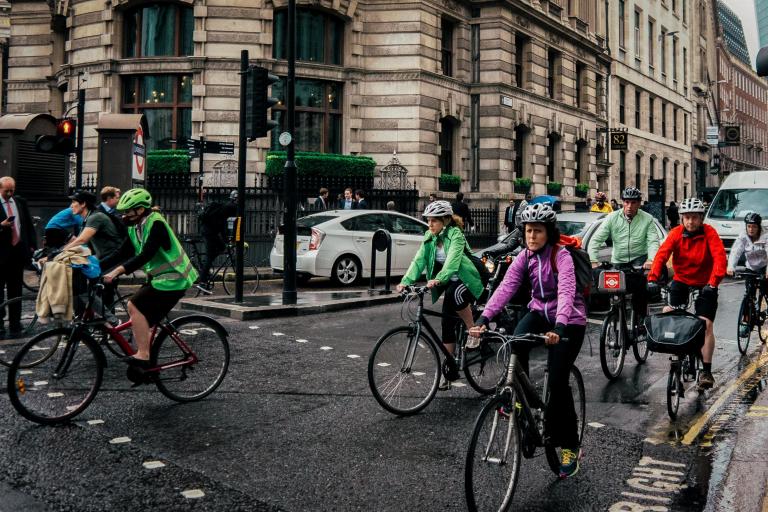
London the UK’s most popular city for cycle commuting, Strava report finds, with almost two-thirds of all cyclists in the capital uploading a commute to the platform – while women are found to be more likely to commute than men
London is the most popular city in the UK to commute by bike – well, if you have Strava anyway – according to recent research by the ride-sharing platform.
According to the findings from Strava Metro, collated to mark Earth Week, 63 per cent of cyclists in Greater London have uploaded a bike commute.
Second on the list of cities with the highest cyclists to bike commuters ratio was Bristol (55 per cent), followed by Edinburgh (50 per cent), Cambridge (43 per cent), and Manchester (42 per cent).
The research also, notably, found that women are more likely to upload commutes to Strava than men.
In Bristol, 47 per cent of male Strava users uploaded a commute, compared to 50 per cent of women. In London, the figure was 53 per cent for women and 52 per cent for men, and in Edinburgh 44 per cent of women uploaded a commute compared to 42 per cent of their male counterparts.
Millennials were also found to be most likely to travel to work by bike, with 56 per cent of those aged 30-39 uploading cycle commutes.
And new post-pandemic working trends have also been flagged by Strava’s research. Tuesday was the most popular day to log a cycle commute on Strava, with 7am the most popular time to start a journey across all the big UK cities.
The average median commute distance in London was 9.2km, with Manchester close behind at 8.8 km, while Bristol and Edinburgh were 6.9km.
In total, bike commutes uploaded to Strava in the UK as a whole have saved 52,993,433 kg of CO2 (compared to if these journeys had been taken by car). Londoners, unsurprisingly, made the most savings, with 17,438,800 kg of CO2 saved – equal to the annual emissions of 10,365 cars.
Findings from Strava Metro’s survey also found that 87 per cent of cyclists commute because it allows them to exercise at the same time, while 56 per cent said they were motivated to commute by bike to positively impact the environment.
24 April 2024, 10:21
Cyclists to be allowed to ride on popular shopping street pedestrianised for 30 years as police say it will “split opinion”... and Conservative councillor concerned about “abuse by vehicles”
A shopping street that has banned cycling for three decades will be opened up to those riding bicycles, as a cycling campaign group argued that the move could be a “great boost to the struggling high street” with “space for all users to circulate in safety”.
However, the decision concerning Bicester’s Sheep Street, in Oxfordshire, expected to be approved tomorrow, has not been universally popular, with Thames Valley Police weighing in with the comment that the proposal will “split public opinion” and Conservative councillors expressing concerns.
Read more: > Cyclists to be allowed to ride on popular shopping street pedestrianised for 30 years as police say it will “split opinion”... and Conservative councillor concerned about “abuse by vehicles”
24 April 2024, 09:20
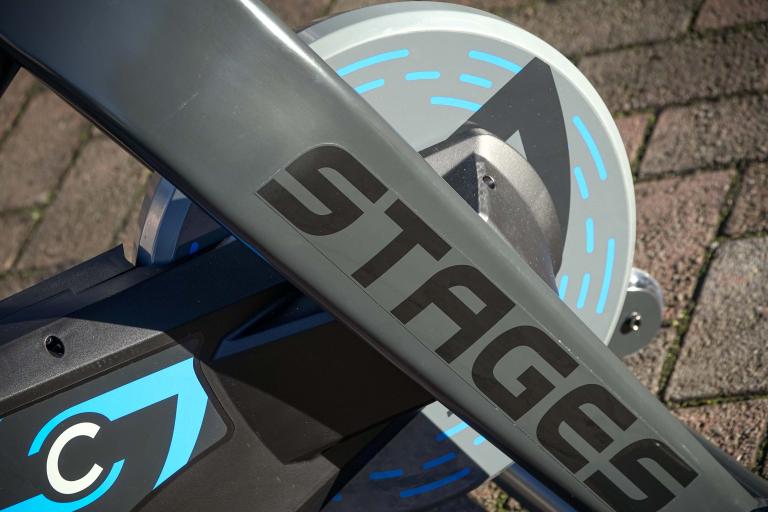
Power meter and indoor bike company Stages Cycling lays off all staff and ceases operations, reports suggest
All staff at Stages Cycling, the well-known US-based power meter and indoor bike company, have been laid off as the brand prepares to cease operations, seemingly the latest casualty of the cycling industry’s ongoing troubles.
According to Escape Collective, supply chain and cashflow problems, an over-reliance on the struggling health club industry (which, one source claimed, comprised up to 80 per cent of the business), and the late collapse of a deal with Giant to acquire a minority stake in the company all contributed to Stages’ apparent demise last week.
Initially starting as a single brand under the Foundation Fitness umbrella, Stages Cycling quickly grew into a successful standalone company, becoming a household name in the cycling world with its revolutionary – and most importantly, affordable and accessible – single-sided power meter in 2012, which helped Team Sky on their way to several grand tours during the 2010s.
However, the company’s reliance on health clubs (it supplied the likes of David Lloyd and Soul Bikes) left Stages in a precarious position during the pandemic, while an “unprecedented global shortage” of microprocessor chips and a massive fall in the supply of Shimano cranks resulted in a lack of inventory right at the point when the bike industry was enjoying the Covid boom.
In January 2023 things started to look up, however, as Giant reportedly acquired a 33 per cent stake in the brand, with a $20 million investment – a deal which quickly collapsed four months later, and which seems to have ushered in this week’s bleak news.
According to anonymous sources who spoke to Escape Collective, the Oregon-based company had initially ceased orders with suppliers and then ceased shipping to customers, before laying off its entire workforce last week, while most products on its website are now unavailable.
We’ll have more on this story as we get it.
24 April 2024, 08:39
Business booming at Colnago since Abu Dhabi investment, bike brand states — with sales “more than tripled”
In case you missed it last night, Colnago’s CEO Nicola Rosin says the legendary Italian bike manufacturer is on the “right track” to becoming “the most desirable bicycle brand in the world”, after sales “more than tripled in three years” since the company was bought by an Abu Dhabi investment firm.
In a press release containing a few selected financial figures, Colnago said that its sales for 2023 were €55,715,101 (£48 million) and its EBITDA (earnings before interest, taxes, depreciation, and amortisation) were €14,015,100, or 25.15 per cent of turnover.
Read more: > Business booming at Colnago since Abu Dhabi investment, bike brand states — with sales “more than tripled”
After obtaining a PhD, lecturing, and hosting a history podcast at Queen’s University Belfast, Ryan joined road.cc in December 2021 and since then has kept the site’s readers and listeners informed and enthralled (well at least occasionally) on news, the live blog, and the road.cc Podcast. After boarding a wrong bus at the world championships and ruining a good pair of jeans at the cyclocross, he now serves as road.cc’s senior news writer. Before his foray into cycling journalism, he wallowed in the equally pitiless world of academia, where he wrote a book about Victorian politics and droned on about cycling and bikes to classes of bored students (while taking every chance he could get to talk about cycling in print or on the radio). He can be found riding his bike very slowly around the narrow, scenic country lanes of Co. Down.
Add new comment
35 comments

ike2112
|
11 months ago
0 likes
So that 2nd article is about the rantings of people in Bury - home of the Yates twins. Proud of their professional cyclist local heroes? Wanting to be jump on that, be seen as a corner of a cycling-friendly hotbed in Lancashire?
No chance...
What other place could have local lads grow up to be Tour podium finishers, stage winners, and yet deride cyclists...

chrisonabike
|
11 months ago
9 likes
“We’re spending cash on posh streets and cycle lanes... not on dangerous potholes,” says Manchester Evening News’ chief reporter, as locals slam “juxtaposition” of “pointless” new bike infrastructure and “old worn-out road surface”
People who are subsidised* to make big holes in road (amongst other negative effects) complain about the holes in the road. Same people also complain about spending (much smaller sums of) cash on enabling people to travel without making big holes in the road (and not requiring other other subsidies).
They shouldn't worry, they're still being subsidised...
* People paying tax all contribute to road maintenance even if they don't drive. Drivers are paying some extra taxes but those do not cover the total costs of driving.

lesterama
|
11 months ago
4 likes
Hate to say it, but the Relativity Special builders may have their calcs awry.
c = 2.998 x 10^8 m/s
Circumference of Earth = 4.008 x 10^7 m
So light travels the equivalent of 7.5x around Earth in 1 sec.
If moving at the speed of light at 90 rpm, you would need a rollout of 1.999 x 10^8 m, which would only take you 5x around the Earth per revolution, not the 6 they state.
Assuming each set of gears has a 52x12 ratio and wheel circumference = 2.1 m gives a rollout of (52/12)^12 x 2.1 = 9.2 x 10^7 m
You'd need an average gear multiplier of about 3.815 per chainring, a bit smaller than 46/12.
I'll get my (lab)coat.

Hirsute
|
11 months ago
10 likes
"Can we find my Aunt Joans cyclist rescuers?! She fell on Saturday in Bletchingley Surrey & they helped. She's OK and wants to write a thank u. "
https://twitter.com/timegan1995/status/1782810254889078817
Aunty Joan swears she had bought cake the day before but maybe her memory is playing up.




Hirsute
|
11 months ago
6 likes
I've found a way to enforce the 1.5m gap

Thermonator is the first-ever flamethrower-wielding robot dog. This quadruped is coupled with the ARC Flamethrower to deliver on-demand fire anywhere!






Didn't they consider putting some sort of rifle on one and using it to 'police' the streets of New York, a couple of years ago?
San Francisco: it was actually approved and they were going to go ahead with it until public outcry forced them to back down.
"Put down your weapon. You have 20 seconds to comply"


He's not there to fill air-time (that's Kirby and the other one), he's there to use his expertise to give good insight into the racing. And he's pretty good at that.
A lot of what he says will be bang on.
I hadn't considered the reaction time issue before, but as an owner of both modern disc brake and old, 80s era, cork pad rim brake bikes, coming to think of it he is bang on. The rim brake bike (and especially the vintage cork-pad stuff) you're just never going to brake that quickly, compared to discs, and riders behind are going to have more reaction time.
Though, the crash on the descent in the Basque country the road surface was terrible.


He'd be bang on if there was a mix of disc and rim brakes in the pro peloton.
It wouldn't make any difference to his point which is that discs slow/stop riders so quickly that the person behind doesn't have time to react, whatever type of brakes they have. Having said that, I feel he only has half a point really as he's ignoring how many crashes have maybe been avoided because of this extra brake power where in the past they might not have been.
He'd be bang on if there was a mix of disc and rim brakes in the pro peloton.
It wouldn't make any difference to his point which is that discs slow/stop riders so quickly that the person behind doesn't have time to react, whatever type of brakes they have. Having said that, I feel he only has half a point really as he's ignoring how many crashes have maybe been avoided because of this extra brake power where in the past they might not have been.
If you're only looking at the guy in front of you then you're going to crash whatever brakes you have, you need to look beyond them to anticipate what they are going to do, that is why practice riding in bunches matters.

You might get caught out by reacting on discs v rims the first time it happens, your brain quickly adapts though.
Unless you are constantly swapping bikes you learn.
Plus there will be riders now in the pro ranks who have only ever ridden discs.
That Basque descent crash had more to do with his group riding & bike handling theory not the technology.

You might get caught out by reacting on discs v rims the first time it happens, your brain quickly adapts though. Unless you are constantly swapping bikes you learn. Plus there will be riders now in the pro ranks who have only ever ridden discs. That Basque descent crash had more to do with his group riding & bike handling theory not the technology.
His point is that if someone grabs a handful in front of you, you don't necessarily have time to do likewise. Whether or not you've experienced rim brakes is immaterial.

You do have time, because the 1st time it happens it catches you out, the 2nd time it happens, unless youre completely incapable of learning, you remember to adapt to the braking zone you need, not to crash.
And eventually it just becomes something you don't even consciously think about, your brain calculates it for you
And its all nonsense anyway, the pro rim brakers always claim rim brakes on carbon wheels on pro bikes are just as powerful (in the dry) and quick to engage as disc brakes. So the reaction times and stopping would be near identical regardless of tech.
None of the crashes happened in the wet,so unless pro cyclists are somehow incapable of learning or adapting, and just keep repeating the same mistakes, or it's got naff all to do with disc brakes


You might get caught out by reacting on discs v rims the first time it happens, your brain quickly adapts though.
Unless you are constantly swapping bikes you learn.
Plus there will be riders now in the pro ranks who have only ever ridden discs.
You - and a couple of others - have fundamentally misunderstood Kelly's point.
It isn't about the rider getting used to their /own/ bike's braking! It's about the riders behind reacting. With rim brakes, there is bit more lag to the brakes fully biting and giving maximum braking. Disc brakes react much more quickly, braking more sharply - hitting max braking more quickly.
That gives the riders behind a little less time to react.



"Everything is all about speed now."
I'm wondering what it was about in his day...
Same back then. Oh, also Codeine.
Pages
Latest Comments
- BikingBud 12 min 5 sec ago
They were trying to avoid the overhanging windows!! Seems like somebody else has scraped the top of the wall before.
- JMcL_Ireland 33 min 41 sec ago
Simplicity goes a long way. Means testing will make it expensive to administer and ultimately defeats the purpose in the same way that the...
- StevenCrook 43 min 42 sec ago
But only if the police recover it. Once it's been sold on? The chances of that are vanishingly small....
- Bigfoz 6 min 25 sec ago
With WBD having taken Discovery+ sports behind a significant paywall (Cycling, SPorts cars, Superbikes, MotoGP, British Superbikes etc etc)...
- biking59boomer 57 min 57 sec ago
TBH, this kind of stupidity is best ignored. By publicly responding we're giving them free publicity.
- biking59boomer 1 hour 8 min ago
Unfortunately politics is the problem. Our councillors pander to the anti-cyclist NIMBYs, especially when local elections are due. The government...
- biking59boomer 1 hour 13 min ago
Only if you're aiming it at over 60s
- hawkinspeter 1 hour 41 min ago
I'd like to see more Chinese products being reviewed as there's some interesting tech available there (e.g. carbon spoke wheels at a relatively...
- hawkinspeter 2 hours 7 min ago
Can't we just move them to Guernsey? https://www.bbc.co.uk/news/articles/crrdnkyvpjgo
- webbierwrex 2 hours 25 min ago
Nice looking wheels but I can't afford that. I'm looking for some nice, wide wheels to optimally run 32mm tyres on.
